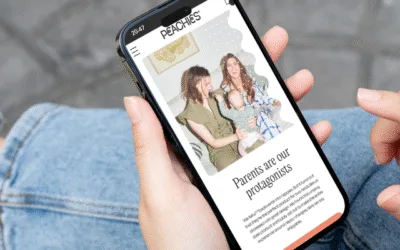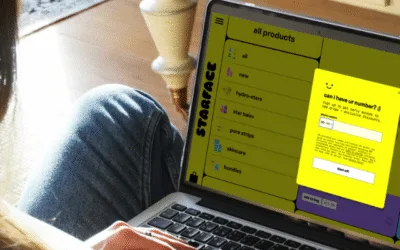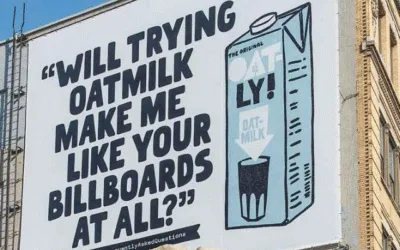Peachies beat Pampers by selling sleep, not nappies. Learn their Ladder of Why messaging trick to make your copy resonate.
Go woke, go broke? Nope. Inclusive language is better for the world & your brand.
Inclusive writing isn't just the right thing to do. It sells better too. Find out how to do your words gooder by being more inclusive in your copy.
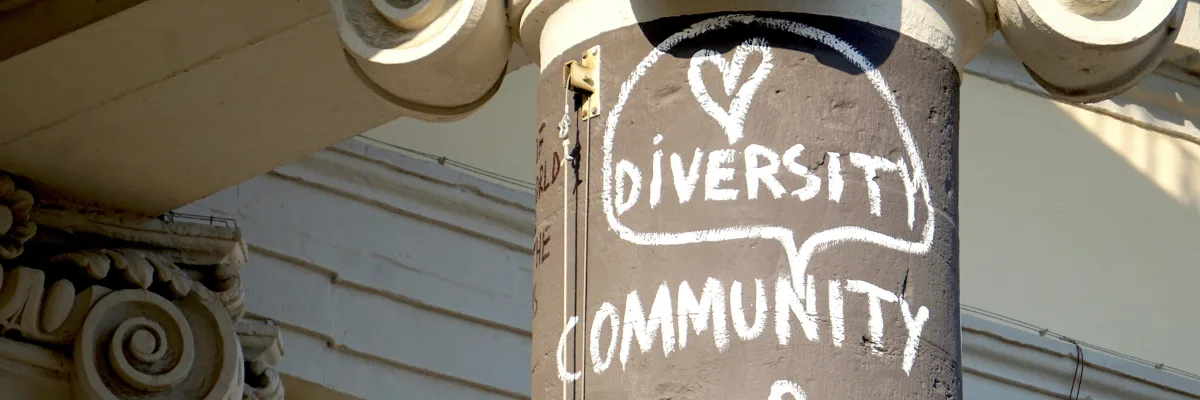
Get pro copy tips, branding tricks and e-comm insights directly to your inbox every Tuesday.
With Pride month on the horizon, there’s only one thing more certain than an inbox full of rainbow emojis…
…and that’s people (usually with a fondness for red headwear or that think it’d be nice to grab a pint with Nigel Farage) jumping into the comments saying “go woke, go broke” or “the woke mind virus has got you too? Unfollowed”.
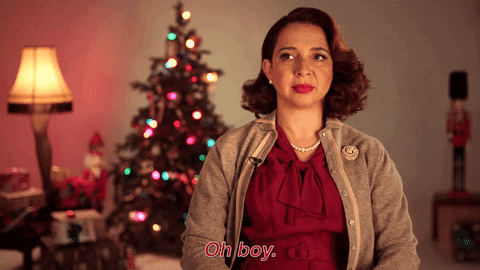
Usually, we treat these comments with the kind of eye-rolling derision they deserve. (After all, as we’ve covered before, bad reviews from the wrong customers are sometimes better than good reviews from the right customers.)
But this year, there’s a new study in town.
And it show’s that going woke doesn’t make you go broke. In fact, it’s the very opposite.
💡 This week’s big idea: inclusive writing isn’t just the decent thing to do. It sells better too.
Before we dig into this, we should say that we believe that brands can (and should) do good things because they’re just the right thing to do, even if they’re not proven to be a growth lever.
But, with so much of the rhetoric around inclusive writing concerning this false dichotomy of “feelings vs facts” (and bosses that sometimes need a little nudge to do something seen as divisive) we thought we’d give you some cold, hard facts that back up the fact that being inclusive = being more profitable.
A 4-year study by Oxford’s Saïd Business School and the UN’s Unstereotype Alliance analysed 392 brands across 58 countries.
They found that ads using inclusive language and representation delivered 👇
3.46% higher immediate sales
16.26% higher long-term sales
62% higher likelihood of being a consumer’s first choice
15% higher brand loyalty
54% higher pricing power (AKA, your products seem more valuable)
9.4% higher salience (AKA, people remember your brand more)
In other words, inclusive messaging made people more likely to buy now, buy later, choose the brand again, and recommend it to others.(And that’s across all markets and all products!)
But how do you do it? Let’s dig in to some really quick and easy ways to make your language more inclusive👇
(Including lots of ways to do it without having to do it at full volume, if you’re just getting started and some inspiration from the GOATs of inclusion, Lush.)
Inclusive writing isn’t pandering, it’s meeting your customers where they’re at.
It’s 2025, so diversity is more visible than ever before. (Although, there is still a long way to go.) And audiences are more finely attuned to language that (either deliberately or accidentally) leaves people out.
👉 They notice when your copy says “he or she” instead of “they.”
👉 They notice when your brand voice only reflects one kind of person or life.
👉 They notice when those hidden biases creep into your writing.
But let’s be clear: inclusive writing isn’t about getting it perfect. It’s not an all-or-nothing test.
Intention matters, and that means it’s about writing in language that reflects and respects the diversity of your audience, across race, gender, disability, age, sexuality, class, culture, and more.
That means things like:
- Using gender-neutral terms unless specificity is relevant
- Avoiding ableist metaphors or phrases
- Not defaulting to white, Western, or male norms
- Speaking with people, not about them
- Recognising nuance without resorting to euphemism or corporate speak
Put simply: it’s writing that helps everyone feel like they belong.
🧠 The two stages of using inclusive language: additive language and transformational language
We’ll be honest, every single client we’ve helped use inclusive language has approached it slowly at the start.
They’ve dipped their toe with the smaller tweaks and then started to expand on that once it’s become part of their brand or their team are comfortable with it.
And if that’s the boat you’re in, there’s no shame in that.
The fact you’re thinking about using inclusive language is huge.
(And even small shifts can make a massive difference to making people feel seen in places they’ve previously felt *not seen*.)
And that’s what stage one is all about 👇
Stage 1: Introducing additive language, AKA letting more people into the conversation
This is where most brands start.What you’re doing at this stage is taking the language you’re already using and expanding it to include more people.
Think:
👉 Swapping out gendered job titles (“chairman” → “chair”)
👉 Saying “ladies, gentlemen, and non-binary folks”
👉 Adding a pronoun field to your onboarding form
Things like that.
And with every small tweak, you’re letting more people into the inner circle of your community.
And that matters.
It’s foundational to making sure your brand is for everyone.
In academic circles, this stage is called the Additive Approach (James A. Banks’ Approaches to Multicultural Curriculum Reform is the go-to text on this thinking, if you’re in for an academic read)
But TLDR: this is the stage where you’re doing the work to make people feel seen without having to burn it down and start again.
Stage 2: Introducing transformative language, AKA “changing the conversation”
You know the saying “The opposite of racist isn’t not racist, it’s anti-racist?”
Well, the same thing applies to inclusive language.
So if you’ve done the little tweaks and you still want to dial up the inclusivity, then that’s when you need to change the conversation.
Transformative language doesn’t just try to include more people, it actively works to reframe the story so more people feel centred from the start.
That’s things like:
👉 Moving from “giving a voice to the voiceless” to “platforming marginalised voices”. (This is a tricky one, but it’s about power dynamics. You’re rethinking your inclusion not as an act of giving, but as an act of recognising the disparity and aligning with the marginalised voices.
👉 Moving from saying “happy holidays” to rethinking which holidays are acknowledged or celebrated in the first place (AKA, spotlighting Lunar New Year, Diwali, etc., based on your community or audience).
👉 Questioning default assumptions when you write copy, like moving from “Designed for mums-to-be” to “Designed for anyone navigating pregnancy, however that looks for you.”
This stage is about shifting power, not just changing wording.In academic speak, this is the Transformation Approach.
In real-world speak: it’s where equity gets baked into everything you do, not just sprinkled on top.
But that Phase 2 is more of a company-wide initiative that involves internal policies, big decisions and making sure everybody is onboard.
With June on the horizon, we thought we’d give you 10 immediately implementable inclusivity tips that you can put to work right away.
10 quick ways to write more inclusively
(We borrowed a few of these from the excellent Greenpeace style guide and added our own.)
- Use gender-neutral pronouns
This is the most obvious one, but it’s good to remind ourselves of. (We still catch ourselves defaulting to he/she sometimes.)
❌ “He/she”
✅ “They/them” (unless you know their pronouns.)
- Avoid ableist language
A lot of ableist language has snuck into colloquial vocabulary without us even noticing. If you write in a chatty, conversational tone, keep an eye out for words like “crazy”, “dumb” or “lame. (And also keep an eye out for terms like “suffering from” when talking about illnesses.)
❌ That’s crazy!
✅ That’s unreal! (This is a change we’ve consciously made in our writing.)
❌ Suffering from Crohn’s Disease.
✅ Living with Crohn’s disease (doesn’t assume how a person feels about their condition)
- Respect self-identification
Use the terms people use for themselves (e.g. “Deaf person,” “trans man”) and capitalise when it’s a cultural identity (e.g. “Black” vs “black”).
- Use person-first language and identity-first language
OK, this is the most complex part to get right.
First of all, only talk about differences if they’re relevant and critical for what you’re saying. If it isn’t, leave it out.
But when you’re talking about marginalised voices or groups, it’s important to know whether to use person-first or identity-first language.
Person-first language was introduced in 1974 in an attempt to destigmatise difference. (For example, it helped move from the harmful term “schizophrenics” to “people with schizophrenia.”)
However, some communities find that people-first language can sometimes be dehumanising and stigmatising. Now, many activists and organisations prefer identity-first language like “autistic person” over “person with autism”. (This is part reclaiming the power of the word, part feeling pride in their identity.)
A general rule of thumb is this: if something can be cured or is temporary, use person-first language (a person with cancer), but if it’s a fundamental part of who the person is, then default to identity-first language (an autistic person).
But no group is a monolith. Make sure you research what the majority of that community prefers to be called. (In this case, 76% of autistic people prefer to be referred to as such.)
- Be mindful of cultural references
Not everyone celebrates Christmas. Not everyone grew up with Enid Blyton. Not everyone understands phrases like “throwing down the gauntlet”. Be mindful of language that excludes people.
- Use plain language
Plain English helps everyone access your message, especially people reading in their second language. (Which is a bonus, because it’s also really good for selling stuff too. 56.34% better, in fact.)
- Avoid ageist language
This is a sneaky one to catch because these terms are part of our everyday vocabulary. But terms like “aging well” feel like a kind and respectful thing to say, but in fact suggest there’s a wrong way to age. Instead, like with everything else, if it’s necessary to say it, refer to the individual’s specific age or use neutral terms like “older adults,” “older populations,” and “people over age X”.
- Write for screen readers
People who are blind or have low vision use screen readers to shop and buy things. Use alt text on your images that clearly describes what’s in the image and why it matters. Focus on useful details like colour, fit, and context, especially for product shots.
(Meta note: we originally used the term visually-impaired in this section until we double-checked it was OK with the Be My Eyes Inclusive Language guide and found that it’s out of date and grossly ableist. A real-life lesson in checking your language with qualified organisations and activists, because even the best of intentions can perpetuate negative stereotypes.)
- Sense-check with your audience
Not sure if something lands right? Ask the communities. Invite feedback. Accept correction. Roll it into your internal documents so you’ve got a note for next time.
- Include everyone in your examples
Not every customer is a white man aged 30–45 with two kids. When you’re writing product descriptions, don’t just focus on the default customer’s life. Let people see themselves in your copy. Add new experiences.
🏆 Digging into a brand absolutely crushing this: Lush
This weekend, I (Jack) took a wander into Poole Old Town (where I live) and walked past the OG Lush store and saw this in the window👇
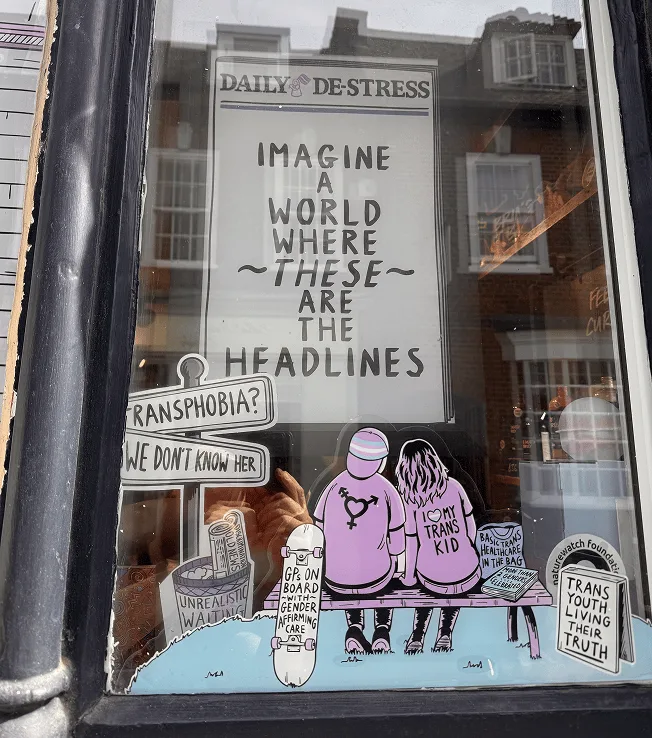
Now, first of all, massive kudos goes out to Lush for this.
This campaign went live just two days after the UK Supreme Court issued its judgment that the legal definition of a woman in the Equality Act 2010 does not include transgender women.

And not only that, but in store, they had a bath bomb co-created with trans activist Dylan Mulvaney (the activist that Bud Light used and then threw under the bus when MAGA got enraged and Kid Rock shot some beer cans), where all the money went to trans charities.
We absolutely love their stance on why they’re going all-in. This is what Lush campaigns manager Andrew Butler told The Drum 👇
“The question is never, ‘Is it a commercially good or bad thing to do?’ The question is never, ‘Are our partner organizations going to add brand value?’ It’s, ‘What is the important issue?’ ‘Who are the organizations really doing the work?’ Our staff really want this. Our leadership are 100% behind it. And it was never a question of reputational risk. We need to do this. Look at all of the negativity out there and how damaging it is to people we care about. We need to respond to this. It’s an imperative. We can’t not.”
☝️A living, breathing example of “the opposite of bigotry isn’t not being a bigot, it’s anti-bigot”.But it’s not just about big gestures of inclusivity and changing the conversation with Lush. It shows up in smaller ways, too.
Just look at this FAQ from their in-store “Lush Times” about getting a spa facial treatment 👇
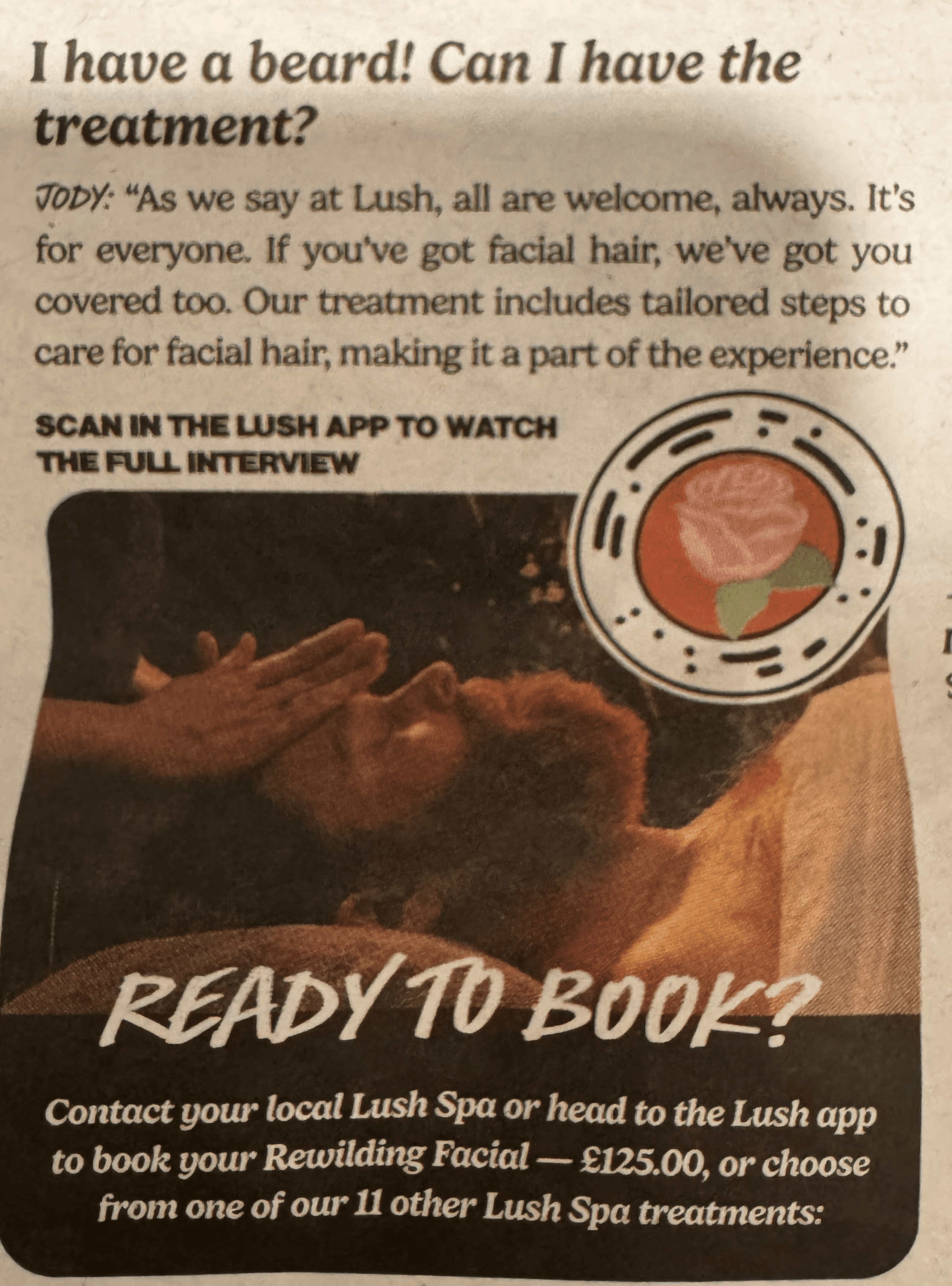
The usual approach to writing about spa treatments is to assume (unless told otherwise) that it’s for a female audience.
But Lush know that not only do men enjoy being pampered, but it’s not just men who have facial hair.
They’re being inclusive in what they’re saying (by realising people with facial hair will want a treatment) and in how they’re saying it (“if you’ve got facial hair, we’ve got you covered” not “we massage men too.”)
It’s smart. It’s inclusive. And it’s going to be more profitable too.
Just *chef’s kiss*.
However, you don’t need to go all-out like Lush to make a difference.As we’ve said, showing up in smaller ways and making people feel seen moves the needle for making inclusive language the norm.
And that’s a huge, huge deal.
Put this to work for your brand 👇
Step 1: Once you’ve written something, let it breathe
There are lots of nuances to inclusive language, especially as the language of exclusivity is always evolving and developing.
So instead of writing to be inclusive first (which can take you out of the creative mode and crush your mojo), write something, then let it sit.
Then revisit it and do a sweep for inclusivity.
Check all your terms. Ask ChatGPT to do an inclusivity sweep. Ask a friend or colleague to give it a once-over, too.
Step 2: Sense check it with different activist groups
As we said, general inclusive writing guides are great, but no group is a monolith. (For example, lots of inclusivity guides still suggest using person-first language, but we know that most autistic people prefer identity-first language.)
So if you’re talking about a marginalised group, look for that community’s specific inclusion guidelines and reference that. (This is a handy rule of thumb: default to the preferred term of the majority of that community.)
Step 3: Document it
The best tip? Create your own version of these fantastic inclusivity guidelines (like this one from University of Bristol or this fantastic Progressive Style Guide from Sum of Us) and share it internally.
Don’t make it fancy, either. A Google Doc that everybody can update with new information (it helps to add sources too) creates a living, breathing document that helps you adapt to inclusive language as it evolves and adapts.
Quick note: we’re by no means the experts on inclusive language. We’re constantly learning as we go. Even writing this newsletter we made mistakes that we had to fix.
(And this email is by no means exhaustive, either.)
But that’s sort of the point.
The exercise isn’t to be able to write inclusive language first time, it’s to make sure that before it gets published, you’re taking the time to make sure you’re being inclusive. You’re giving a shit and doing your best.
And if that’s where you’re at, massive kudos. We need more brands like yours.
See you next week for more ways to do words gooder.
Dive into more free tips and tricks 👇
How Starface use orthography to build a killer brand voice their customers love
The words you write matter. But so do your full stops, emojis and lowercase letters. Learn how to turn punctuation into a powerful part of your brand voice.
Why Oatly’s brand voice is so damn good (and how yours can be, too)
We dig into the three layers of brand voice (10,000ft, 1,000ft, ground level), show how Oatly nails each one and how you can do it for your own brand.
The weekly newsletter that takes your brand’s copy from “meh” to “hell f*cking yeah!”
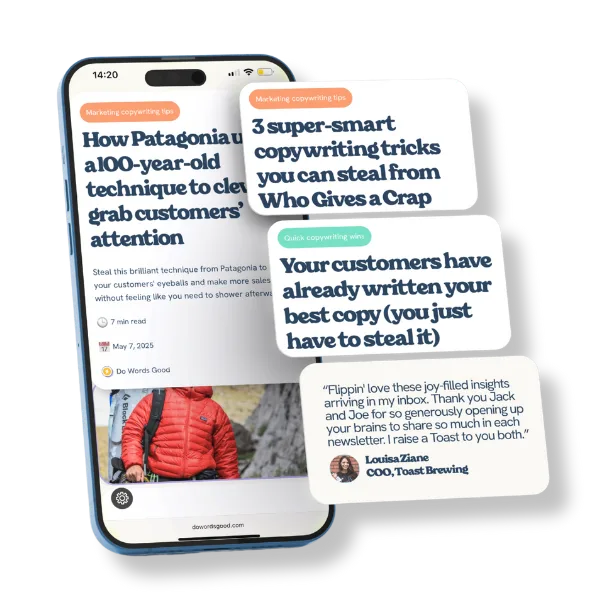
Read every week by legends at brands like these











